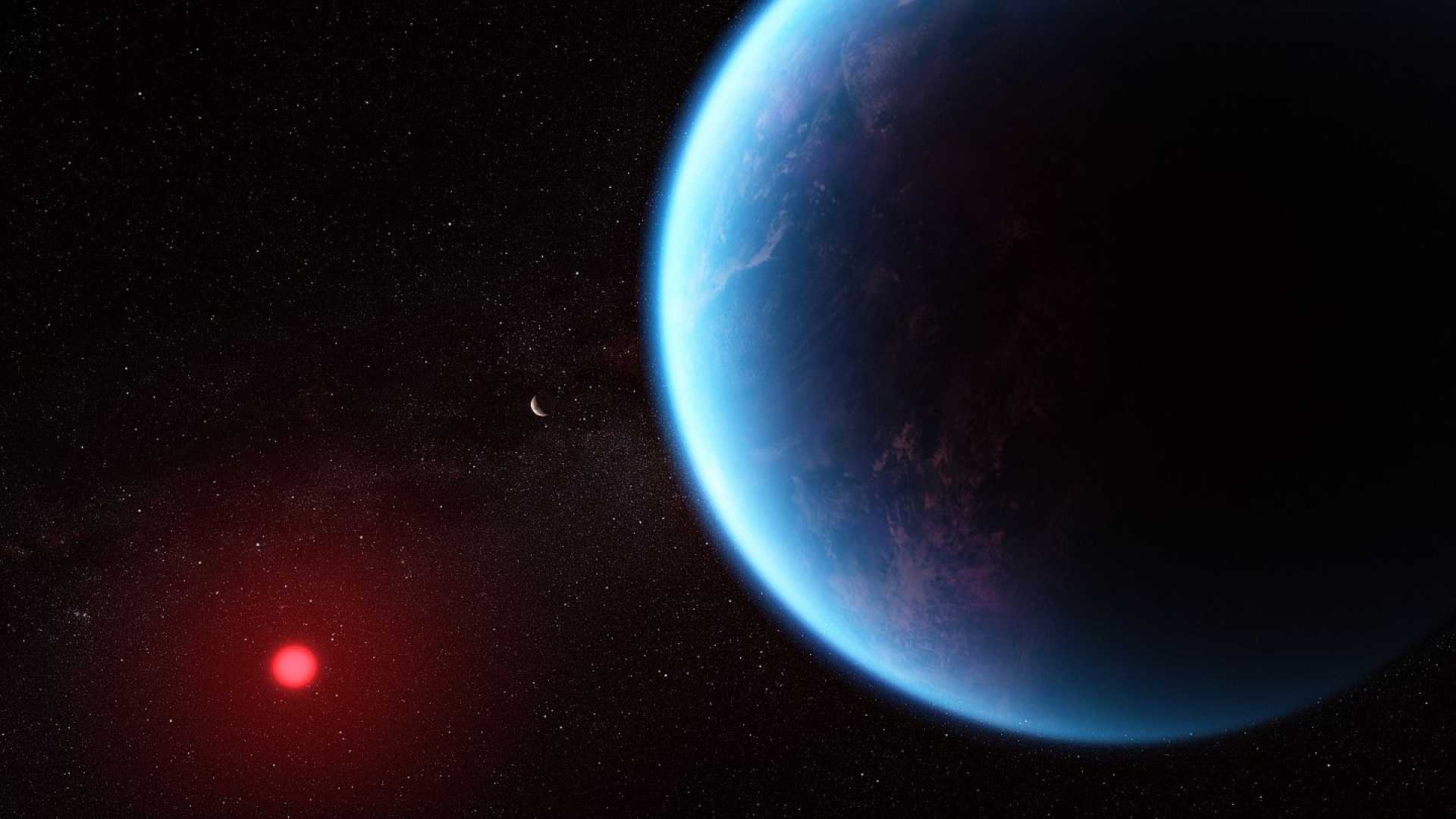News
Scientists Discover Signs of Life on Distant Planet K2-18b

CAMBRIDGE, England — Astronomers have detected promising signs of life on an exoplanet 124 light-years from Earth, according to a study published on April 16, 2025.
Using data from the James Webb Space Telescope (JWST), a team of scientists identified the chemical signatures of dimethyl sulfide (DMS) and dimethyl disulfide (DMDS) in the atmosphere of K2-18b, a planet located in the habitable zone of its host star in the constellation Leo. K2-18b is a ‘Hycean world’—a term used to describe planets that are thought to be covered in oceans and possess the necessary ingredients for life.
K2-18b is approximately 2.6 times larger and 8.6 times more massive than Earth, with atmospheric temperatures comparable to our planet’s. Its close orbit around a red dwarf star means a full year on K2-18b lasts just 33 Earth days.
Professor Nikku Madhusudhan of Cambridge‘s Institute of Astronomy led the research. He noted, “Given everything we know about this planet, a Hycean world with an ocean that is teeming with life is the scenario that best fits the data we have.”
Previous observations of K2-18b’s atmosphere had already revealed the presence of methane and carbon dioxide, marking the first detection of carbon-based molecules on an exoplanet in the habitable zone. The levels of DMS and DMDS measured on K2-18b are remarkably higher than those found on Earth, where their concentrations typically remain below one part per billion. In stark contrast, levels on K2-18b are estimated to be over 10 parts per million.
While the findings are exciting, Professor Madhusudhan emphasized caution, stating, “Further observations from JWST are needed to confirm that our results are not due to chance.” He acknowledged that unknown chemical processes could potentially explain the detected DMS and DMDS levels.
In addition to examining the chemical presence of these molecules, Madhusudhan’s team aims to investigate the possibility of non-biological production of DMS and DMDS at similar concentrations.
“Decades from now, we may look back at this point in time and recognize it was when the living universe came within reach,” he remarked, touching on the broader implications of the discovery.
The observations come from analyzing the light that passes through K2-18b’s atmosphere as it transits its star. This process allows astronomers to detect minute changes in stellar brightness that reveal the planet’s atmospheric composition.
Co-author Måns Holmberg from the Space Telescope Science Institute stated, “It was an incredible realization seeing the results emerge and remain consistent throughout the extensive independent analyses.”
For their results to reach the threshold of scientific significance, the findings must achieve what’s known as the five-sigma threshold, indicating a very low chance of occurring by random chance.
The discovery was published in The Astrophysical Journal Letters and comes as renewed interest in the potential for extraterrestrial life has surged in recent years. Last month, scientists found organic molecules in Martian rock samples that could imply ancient life existed on the Red Planet.
The search for extraterrestrial life continues to captivate both scientists and the public, as discoveries like these challenge our understanding of life beyond Earth.












